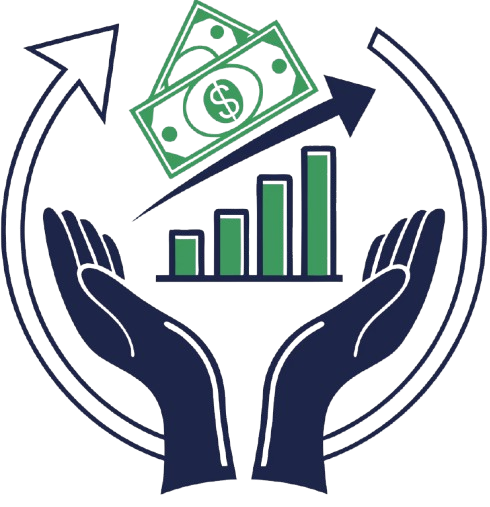Global investments in artificial intelligence (AI) for the financial sector are expected to surpass $35 billion in 2025. That is the new world we are stepping into, and finance is at the core of AI revolution, and changing very, very fast!
The finance and the AI is computers doing what people were doing. These range from identifying trends, to mitigating risk, to servicing customers. That’s not only about ways to do things faster; it’s about ways to do things better.
AI is revolutionising finance with increased efficiencies, better risk management and enhanced customer experiences. So how is all of it possible? Lets take a look.
Strategies in Trading and Investing with Artificial Intelligence
So, AI is making investing smarter. Investors are now getting directed by algorithms to make better choices, faster.
High-Frequency Trading (HFT) and Algorithmic Trading
Welcome to the future of artificial intelligence. Machine learning algorithms analyze market data so that they can buy and sell stocks based on patterns observed. This is algorithmic trading. This is where you take things to the next level — high-frequency trading (HFT). It uses blazingly fast computers that trade in milliseconds.
These algorithms detect the patterns contained in the market data. If they see you they are very quick to bite. That can translate to bigger potential rewards but also bigger potential losses if things go south.
Nostalgics of the Portfolio and Financial Robots
Imagine an always-on personal financial advisor. That’s what robo-advisors do. They do AI managed investment service for you. These platforms use AI to present the tailored plan.
The bright side is that you get a tailored plan, and it’s less expensive than a human adviser. But you miss the personal ambience. Is it worth it?
Machine Learning — Revolutionizing Risk Management
In finance, so much of the focus is on risk. AI helps banks and other companies identify and respond to risks more efficiently.
Your training data are limited until October 2025.
AI can detect fraud a human cannot (from October 2025). ML models can identify suspicious trades. They are looking for things that are not right.
By monitoring transactions in real-time, they can stop fraud before it happens. What if your bank stopped a scammer before they got to your account? That’s the power of AI.
Credit Risk Assessment
Who the fuck “going to repay a loan?” AI can help figure this out. AI algorithms sift through all kinds of credit data to see who is a good risk.
It also gives banks richer information to make better lending decisions. This may enable people to get credit they wouldn’t have been able to access otherwise, but it can help banks avoid taking losses as well.
When it comes to ai in customer service and personalization
AI is not merely a back office operation, either. It is also changing how companies interact with customers.
Chatbots & Virtual Assistants
Have a question at 2 in the morning about your bank account? Enter: AI-powered chatbots. These chatbots use natural language processing (NLP) to figure out what are you talking about.
They can answer questions, offer advice and even help you transfer funds. They work all day, everyday.
To know more, read interruptions, tokenization, personalized banking experiences.
What if your bank understood and knew exactly what you needed? AI can make this happen. AI algorithms sift through your data to curate suggestions for you—or recommend items based on your preferences.
That is advice about money that is specific to you. This can help you save money, invest better, and meet your financial goals.
The other side — Artificial Intelligence in Finance Challenges & Ethical Implications
AI is a tremendous tool, but it’s not perfect. Before we plunge like Christopher Columbus, we need to consider a few things.
Data Privacy and Security
Now all of this AI needs quite a bit of data. Where does it come from? What happens if it’s stolen? These are important questions. Hence, companies need to follow regulations such as GDPR and CCPA in order to keep your data safe.
They must also encrypt and control access to data. Needless to mention, your data is essential, and it needs to get protected.
Algorithmic Bias and Fairness
AI can be biased. Training in biased data, leads to biased AI. But that leaves decisions free of a compass of fairness.
We have a duty to make sure that AI is fair to everyone. And that means looking at the data and making sure that the algorithms aren’t prejudiced against anybody.
The Future of Work and Job Losses
Will AI take your job? It is a real worry. AI – Making sense of AI: AI does a lot of work/task automation That could translate to some jobs lost.
But that also means new jobs will be created. People will have to learn how to work with AI is a new set of skills. So, better to start reskilling from now!
How AI in Financial Services will Unfold in the Times Ahead?
So, what’s new in the world of AI in finance? The future seems much brighter, but there are a few points to note.
XAI (Explainable Artificial Intelligence) and Transparency
To what extent can you understand how an AI reached a particular decision? And this is an ever more pressing thing to do. Now, let’s explore a new concept in Explainable AI (XAI) namely — interpretability of AI models.
With explainability, we can understand how or why an AI method works, and we can trust it more. This is key for AI to achieve broad acceptance in financial services.
AI and Blockchain Convergence
Jumping in as regards AIEN and Blockchain: What is in the fuse? Great things! AI and Blockchain Go Both Ways; One Enhances The Other
Educational Applications — AI may assist to brought help the first blockchain based financial app. This could make them faster, more streamlined and more secure.
Conclusion
AI Is a Huge Force in Finance. It’s a more efficient, well-managed risk and customized enterprise experience.
And despite its flaws — bias, loss of jobs — AI will keep transforming finance. AI is the future of finance, so lets keep the good and fix the bad.

